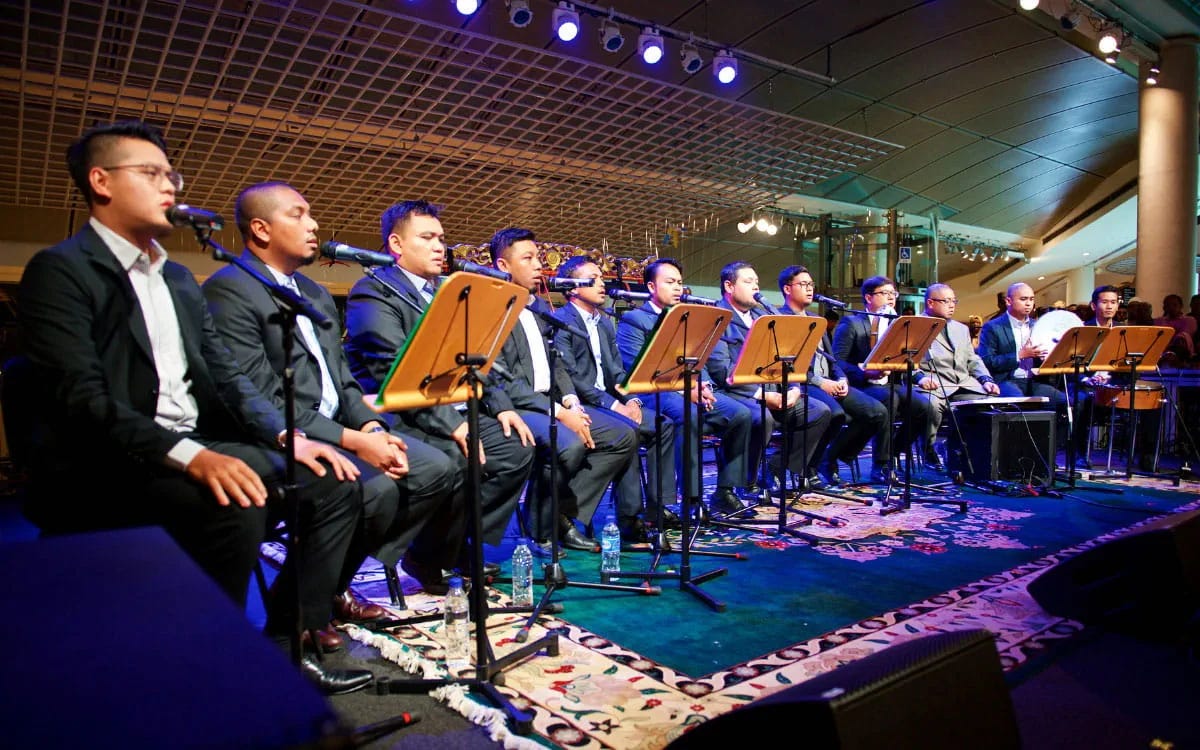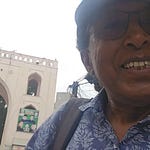I am currently travelling, with a recent 15-hour stay in Singapore (please refer to the references and my commentary below for context, see also this and this), followed by onward travel to Hyderabad, India, to attend the World Summit Awards (WSA) event. This update, therefore, spans a diverse set of contexts—Somalia, Singapore, and India—highlighting the intersection of the global and the local (glocal) in my observations. It includes reflections on the dollarisation of the Somali shilling as well as coverage of a Qasidah poetry event. I hope you find the discussion both informative and engaging.
In addition, I have begun using the "Notes" section to share shorter, more concise commentaries. If you have already read the italicized sections below via that channel, you may wish to skip ahead directly to the segment on Qasidah, the Islamic devotional poetry event held in Singapore.
Are you tarrified today? This must be a question many are trying to answer today. A question Somali leaders don't have to worry about, not yet. I was on my way to the airport 🛫 today I was reading some stuff on the social media on this topic… see the exchange attached.
A well respected #Somali scholar based in Canada informed us that the Trump's liberation day tarrifs would impact the $US negatively. For me I have no interest in that debate, but would rather encourage all Somali scholars to focus on how we ended up with dollarised economy without any legislation or even presidential decree!
It is mind boggling that not many in Somalia and in the diaspora are interested in this topic. Why not? What is the role of the Somali central bank, the ministry of finance in this area? How can we use $US in Somalia 🇸🇴 and yet have no laws, rules and regulations about this. How is the exchange rate established? By whom? The Somali-Canadian scholar mentioned above argues the dollarisation was helpful by keeping inflation manageable. How so? Where is evidence? Pray share.
Dollarised Somali Shilling by Whom?
The Somali shilling (SOS) is considered de facto dollarised, meaning that despite the existence of a ‘national currency’, the U.S. dollar is widely used in everyday transactions, pricing, and savings across Somalia. This dollarisation has deep historical, economic, and political roots. No single entity or government formally dollarised the Somali economy. Instead, dollarisation in Somalia is the result of organic, bottom-up adoption by businesses, individuals, and informal financial networks, especially in the absence of a strong central bank or monetary authority.
Why is the Somali Shilling Dollarised?
Collapse of the Central Government (1991): After the fall of Siad Barre’s regime, Somalia experienced state collapse. The Central Bank of Somalia ceased to function, and formal monetary policy disappeared. With no credible institution to issue or regulate the Somali shilling, public confidence in the currency eroded.
Counterfeit Somali Shillings: In the 1990s and early 2000s, warlords and private actors printed counterfeit Somali shillings in bulk. This led to hyperinflation, severely devaluing the currency. The Somali telecos who also run the remittance businesses, and by default the monetary system… in fact the de facto (some would argue de jure) government turned to the U.S. dollar — to protect their wealth.
Remittances in U.S. Dollars: Somalia is one of the most remittance-dependent countries in the world. The Somali diaspora sends billions annually — primarily in U.S. dollars. These remittances flow into the economy via informal money transfer operators (hawala), reinforcing dollar use. The problem is that the Somali diaspora pays for any fluctuation on the $US forex, as well as the transaction fees, and many more hidden costs, while the telecos/remittance/mobile money platform owners, i.e. the deep state within the Somali state makes money, more money regardless of currency and market fluctuations.
Informal Financial System and Hawala: Hawala networks facilitate dollar-based transfers and transactions. These systems are trusted, efficient, and resilient, further entrenching the dollar’s use in both urban and rural Somalia. But for how long?
Absence of New Somali Currency: Until very recently, there had been no new official printing of Somali shillings since 1991. Most SOS notes in circulation are old, worn, or counterfeit. In contrast, dollars are more readily available and trusted.
Lack of Monetary Policy Instruments: With no ability to control inflation, interest rates, or the money supply, the Somali authorities cannot effectively manage their currency. This further incentivizes reliance on the dollar.
I will leave it there, but let us continue the discussion and hope will find a solution soon. Let us move on to a different topic that brought me to Singapore on my way to Hyderabad, more on this in the next week’s post.
Qasidah: Islamic Devotional Poetry : Events – A Tapestry of Sacred Music 2025 this event was presented by Singapore’s Esplanade by Madeehul Mustafa on the 4th of Apr 2025, Fri, 9.15pm.
Not much is known about the origins of qasidah, yet it is believed to be one of the oldest and most esteemed forms of poetry in the Islamic world. With roots in pre-Islamic tribal and court poetry, the term qasidah, derived from the verb qasada, means “to intend” or “to aim at”. These poems can extend to over 100 verses, meticulously arranged with a single rhythmic metre and rhyme scheme. Originating in Arabia, qasidah spread through religion, trade and conquests to Persia, North and East Africa, as well as Central and Southeast Asia.
Historically, qasidah was intended to be delivered in song. The oldest examples were crafted to reflect the poets’ circumstances, praise their tribe or patron, and carry a moral message. Over the centuries, qasidah evolved to express social ideals, political commentary and sometimes satire. Poems of religious praise also gained prominence, with the most renowned being the Qasidah Al-Burdah (Qasidah of the Mantle), written in the 11th century by Egyptian poet Imam Al-Busri.
The story of Imam Al-Busri
The story goes that Imam Al-Busri was struck by semi-paralysis after a stroke. In his despair, he composed the Qasidah Al-Burdah in honour of the Prophet Muhammad. While reciting the poem in sincerity and concentration, he fell asleep and dreamt of the Prophet, who gently covered him with his mantle. Upon waking, Imam Al-Busri found himself completely cured of his affliction. Since then, the poem has been venerated by many Sunni Muslims, recited in devotion, as well as used to decorate the walls of public buildings and mosques. Some believe that reciting the poem confers blessings in life—removing difficulties, curing ailments, and aiding success in various endeavours.
From Arabia to Southeast Asia
In 1200CE, Islam and qasidah spread across Southeast Asia with the arrival of Arab traders. The poems were sung in Arabic, with more popular ones, such as the Qasidah Al-Burdah, translated into Malay even before the 1600s. Texts were sung in commemoration of Prophet Muhammad’s birthday, during rites of passage as well as at weekly religious congregations. Shorter renditions, featuring verses taken from the original long-form qasidahs, also became popular. This sung poetry is usually accompanied by frame drums such as the Malay rebana (equivalent of the Arabic daff) and the pear-shape lute, gambus.
There is hope, a bright future for Qasidah genre in Asia, even if many of you think and associate it with Halab and the Middle East. Until next week, as always comments and feedback welcome.













Share this post